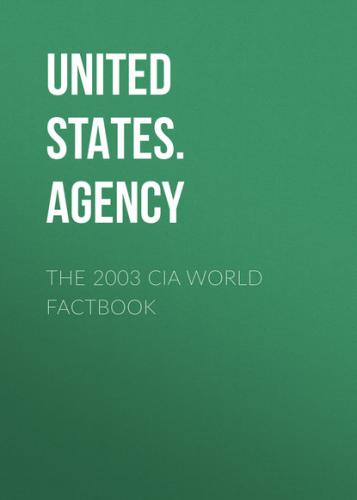Exports - partners:
Germany 34.3%, Austria 8.5%, Italy 5.5%, France 5.4%, US 4.9%, UK
4.5% (2002)
Imports:
$33.9 billion f.o.b. (2002 est.)
Imports - commodities:
machinery and equipment 51.6%, other manufactures 35.3%, fuels and
electricity 8.2%, food products 2.9%, raw materials 2.0% (2001)
Imports - partners:
Germany 25.3%, Austria 7.7%, Italy 7.5%, Russia 6%, China 5%,
France 5% (2002)
Debt - external:
$31.5 billion (2002 est.)
Economic aid - recipient:
ODA $250 million (2000)
Currency:
forint (HUF)
Currency code:
HUF
Exchange rates:
forints per US dollar - 257.89 (2002), 286.49 (2001), 282.18
(2000), 237.15 (1999), 214.4 (1998)
Fiscal year:
calendar year
Communications Hungary
Telephones - main lines in use:
3.095 million (1997)
Telephones - mobile cellular:
1.269 million (July 1999)
Telephone system:
general assessment: the telephone system has been modernized and is
capable of satisfying all requests for telecommunication service
domestic: the system is digitalized and highly automated; trunk
services are carried by fiber-optic cable and digital microwave
radio relay; a program for fiber-optic subscriber connections was
initiated in 1996; heavy use is made of mobile cellular telephones
international: Hungary has fiber-optic cable connections with all
neighboring countries; the international switch is in Budapest;
satellite earth stations - 2 Intelsat (Atlantic Ocean and Indian
Ocean regions), 1 Inmarsat, 1 very small aperture terminal (VSAT)
system of ground terminals
Radio broadcast stations:
AM 17, FM 57, shortwave 3 (1998)
Radios:
7.01 million (1997)
Television broadcast stations:
35 (plus 161 low-power repeaters) (1995)
Televisions:
4.42 million (1997)
Internet country code:
.hu
Internet Service Providers (ISPs):
16 (2000)
Internet users:
1.2 million (2001)
Transportation Hungary
Railways:
total: 7,875 km
broad gauge: 36 km 1.524-m gauge
standard gauge: 7,620 km 1.435-m gauge (2,628 km electrified)
note: Hungary and Austria jointly manage a cross-border,
standard-gauge railway connecting Gyor, Sopron, and Ebenfurt (Gysev
railroad) with a route length of 101 km in Hungary and 65 km in
Austria; 156 km of this line is electrified (2002)
narrow gauge: 219 km 0.760-m gauge
Highways:
total: 188,203 km
paved: 81,680 km (including 438 km of expressways)
unpaved: 106,523 km (1999)
Waterways:
1,373 km (permanently navigable) (1997)
Pipelines:
gas 4,397 km; oil 990 km; refined products 335 km (2003)
Ports and harbors:
Budapest, Dunaujvaros
Merchant marine:
total: 1 ship (1,000 GRT or over) 3,784 GRT/5,500 DWT
ships by type: cargo 1
Airports:
49 (2002)
Airports - with paved runways: total: 17 over 3,047 m: 2 2,438 to 3,047 m: 9 914 to 1,523 m: 1 under 914 m: 1 (2002) 1,524 to 2,437 m: 4
Airports - with unpaved runways: total: 32 2,438 to 3,047 m: 3 1,524 to 2,437 m: 5 under 914 m: 8 (2002) 914 to 1,523 m: 16
Heliports: 5 (2002)
Military Hungary
Military branches:
Ground Forces, Air Forces
Military manpower - military age:
18 years of age (2003 est.)
Military manpower - availability:
males age 15–49: 2,541,426 (2003 est.)
Military manpower - fit for military service:
males age 15–49: 2,026,912 (2003 est.)
Military manpower - reaching military age annually:
males: 64,305 (2003 est.)
Military expenditures - dollar figure:
$1.08 billion (2002 est.)
Military expenditures - percent of GDP:
1.75% (2002 est.)
Transnational Issues Hungary
Disputes - international:
Hungary has yet to amend status law extending special social and
cultural benefits to ethnic Hungarians in neighboring states, who
protest the law
Illicit drugs:
transshipment point for Southwest Asian heroin and cannabis and for
South American cocaine destined for Western Europe; limited producer
of precursor chemicals, particularly for amphetamine and
methamphetamine; improving, but remains vulnerable to money
laundering related to organized crime and drug trafficking
This page was last updated on 18 December, 2003
======================================================================
@Iceland
Introduction Iceland
Background:
Settled by Norwegian and Celtic (Scottish and Irish) immigrants
during the late 9th and 10th centuries A.D., Iceland boasts the
world's oldest functioning legislative assembly, the Althing,
established in 930. Independent for over 300 years, Iceland was
subsequently ruled by Norway and Denmark. Fallout from the Askja
volcano of 1875 devastated the Icelandic economy and caused
widespread famine. Over the next quarter century, 20% of the
island's population emigrated, mostly to Canada
